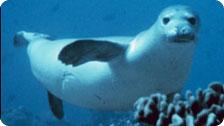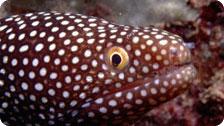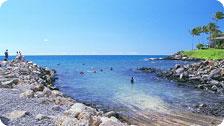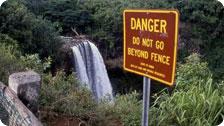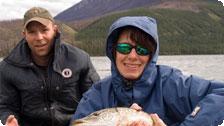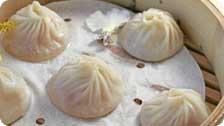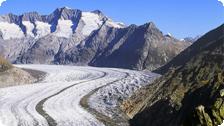Wellness: Kauai, USA: Beginner’s SCUBA Diving Luck
by Jill Richardson, Granola Diva
From the back of a Barnes and Noble, I sat down with my cell phone, opened a copy of The Ultimate Kauai Guidebook, and punched in the number for Fathom Five Divers (www.fathomfive.com). I looked at my watch and wondered whether it was too late to call. Although it was 9pm in the middle of Wisconsin’s winter, it was only 4pm on the island of Kauai. I called. Watching the snow fall outside the window, I arranged a beginner’s two tank dive in two weeks’ time.
The whole trip was a fluke. One morning, I arrived at work to an email instructing me to add my name to a spreadsheet if I’d like to work at a hospital in Honolulu for a week. I listed my name and requested five days vacation. I booked a plane ticket from Honolulu to Lihue, Kaua’i and a bed in a hostel in Kapa’a.
I had expected to spend the entire five days lying on the beach, but my run of good luck continued when a postcard showed up in my mailbox offering a free rental car for a weekend. With a rental car, I could go exploring. A friend of a friend, a Kauai native, encouraged me to seek out The Ultimate Kauai Guidebook; the book led me to my serendipitous SCUBA drive.
I am not certified in SCUBA, but Fathom Five takes beginners diving after a quick safety briefing. I met my instructor at the dive shop and then we drove separately to the dive site, Koloa Landing. Probably the most popular shore diving site in Kauai, I compare it to the baby pool of SCUBA.
Once in the water, I let the air out of my vest and immediately sunk like a rock to the bottom, about 10 feet down. As I fumbled with my equipment, the instructor removed a weight from my vest and I floated straight up to the surface. After a few more tries, I found the right combination of weight and buoyancy to begin the dive. Fortunately, I found it easy to breathe into my regulator, swimming underwater with Hawaiian reef fish of all species and colors.
Koloa Landing, according to my instructor, is over-dived, causing many of the more interesting ocean creatures to shy away from it. As we swam along, he showed me a snake eel and a conch, but on the whole, we saw only fish, rocks, and coral. The dive site is ideal for beginning divers seeking an area with safe currents and marine life. My goal for the two dives was to see at least one endangered Hawaiian sea turtle.
The first dive was exciting and uneventful at the same time. I saw my sea turtle, which was far bigger and more magnificent than I could have imagined. After almost an hour under the ocean, I emerged at the very spot where I’d disappeared under the surface. Looking out on the Pacific, I asked the instructor where we had swum and he used hand motions and buoys to describe our route for the last dive and for the next one.
When I entered the water for my second dive, I silently questioned the benefit of going on a second dive. Koloa Landing seemed to hold little more than fish, rocks, and coral. Even if my second dive held more turtles in store – was that worth the time and money it entailed?
With such thoughts distracting me, I grew fidgety. I practiced cleaning my mask underwater by allowing water inside the mask and blowing bubbles through my nose to expel the water. Suddenly, I felt the instructor’s hand excitedly tapping my shoulder. I looked up and saw a five-foot-long white tip reef shark several yards ahead of us.
With no inherent fear of sharks, I followed the instructor’s lead to judge whether the shark may be dangerous or not. He swam towards the shark to get a better look and I quickly followed. Again I felt his hand on my arm. My eyes followed his pointed finger and I saw a Hawaiian monk seal. Hawaiian monk seals are an endangered species, endemic to Hawaii. Most seals live in the Northwestern Hawaiian Islands, but an estimated 16-30 live in the waters off Kauai. This particular seal was hunting an eel.
Letting some air out of my vest, I sank to the sandy ocean bottom and watched the seal for the next 20 minutes. The eel concealed itself within a large rock, but its snarling jaws were fully exposed. Several times, the seal opened its mouth as if the eel would willingly allow itself to be eaten, and the eel bared its enormous teeth back. Twice, the seal swam to the surface for air and returned to the hunt. Then, the eel made its fatal mistake. It got fed up. I don’t think it realized the gravity of the situation. The eel found it inconvenient to have a seal around, and, leaving the safety of the rock, it shot off like a dart.
The seal followed the eel, and I followed the seal. Although I was much lighter than the several hundred pound seal, even with my SCUBA gear, I couldn’t compete in grace or speed. I caught up just in time to see the epic battle play out.
The seal caught the eel in its mouth several times, biting the eel in its midsection. The eel turned its long, flexible body around to bite its captor, and the seal released its grip. At last, the seal caught the eel by its head, and the eel’s body became limp. The eel was still alive, but knew it lost, just as the seal knew it had won.
I wished the seal bon apetit and began the trek back to the shore. I saw one more Hawaiian sea turtle on the way back—gravy.
Honolulu HI Romantic Getaway Lodging
Discover more from Tango Diva
Subscribe to get the latest posts sent to your email.
